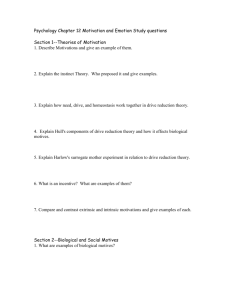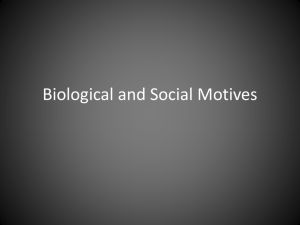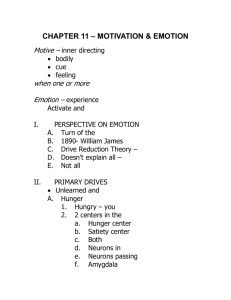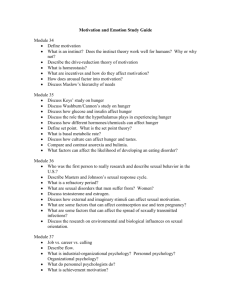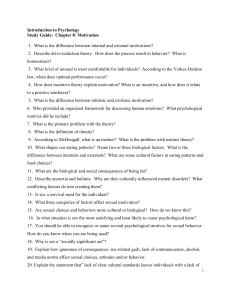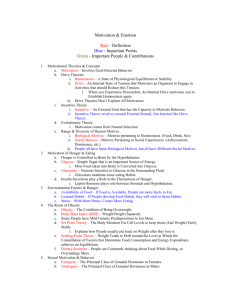Factual
advertisement
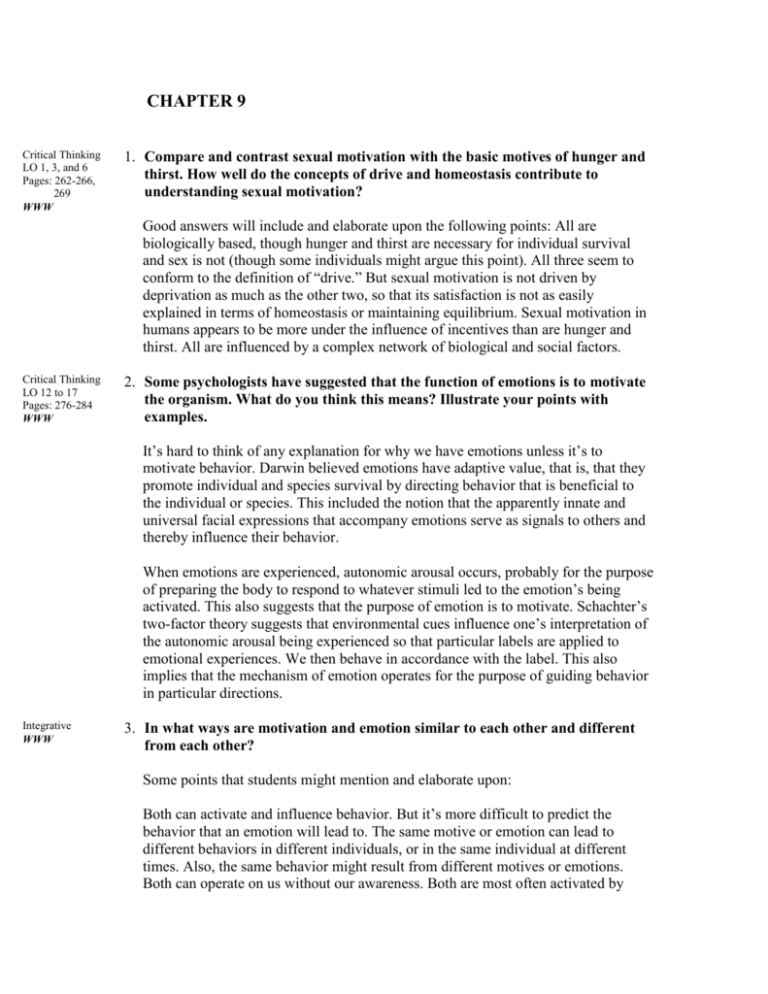
CHAPTER 9 Critical Thinking LO 1, 3, and 6 Pages: 262-266, 269 WWW 1. Compare and contrast sexual motivation with the basic motives of hunger and thirst. How well do the concepts of drive and homeostasis contribute to understanding sexual motivation? Good answers will include and elaborate upon the following points: All are biologically based, though hunger and thirst are necessary for individual survival and sex is not (though some individuals might argue this point). All three seem to conform to the definition of “drive.” But sexual motivation is not driven by deprivation as much as the other two, so that its satisfaction is not as easily explained in terms of homeostasis or maintaining equilibrium. Sexual motivation in humans appears to be more under the influence of incentives than are hunger and thirst. All are influenced by a complex network of biological and social factors. Critical Thinking LO 12 to 17 Pages: 276-284 WWW 2. Some psychologists have suggested that the function of emotions is to motivate the organism. What do you think this means? Illustrate your points with examples. It’s hard to think of any explanation for why we have emotions unless it’s to motivate behavior. Darwin believed emotions have adaptive value, that is, that they promote individual and species survival by directing behavior that is beneficial to the individual or species. This included the notion that the apparently innate and universal facial expressions that accompany emotions serve as signals to others and thereby influence their behavior. When emotions are experienced, autonomic arousal occurs, probably for the purpose of preparing the body to respond to whatever stimuli led to the emotion’s being activated. This also suggests that the purpose of emotion is to motivate. Schachter’s two-factor theory suggests that environmental cues influence one’s interpretation of the autonomic arousal being experienced so that particular labels are applied to emotional experiences. We then behave in accordance with the label. This also implies that the mechanism of emotion operates for the purpose of guiding behavior in particular directions. Integrative WWW 3. In what ways are motivation and emotion similar to each other and different from each other? Some points that students might mention and elaborate upon: Both can activate and influence behavior. But it’s more difficult to predict the behavior that an emotion will lead to. The same motive or emotion can lead to different behaviors in different individuals, or in the same individual at different times. Also, the same behavior might result from different motives or emotions. Both can operate on us without our awareness. Both are most often activated by some internal or external stimulus. According to some prominent theories, there are both primary motives and primary emotions. Primary motives are biological in nature; there are also social motives. The text offers no comparable division of emotions into biological and social. According to prominent theories, the experiences of both motivation and emotion are influenced by cognitive factors. Similar areas of the brain (especially the hypothalamus and the ANS) appear to be involved in both.



